4 Ways To Treat Plantar Fasciitis At Home
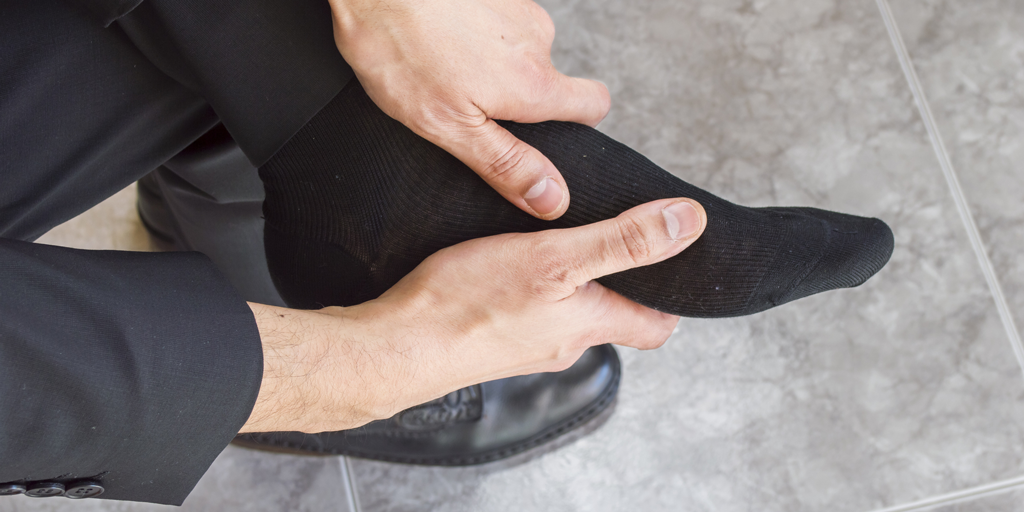
Studies show that 75% of people will experience foot pain in their lives from poor-fitting footwear, working on their feet for long hours, or high-impact exercise. If you or someone you know has experienced foot pain that limits your activities, you know how frustrating it can be! In this article, we will outline plantar fasciitis stretches that can help ease pain caused by this condition.
One of the most common causes of foot pain is called plantar fasciitis.
The plantar fascia is the connective tissue that runs along the bottom of your foot from your heel to your toes. High impact activities, improper footwear, obesity, and certain foot mechanics can all contribute to the irritation and inflammation of this tissue, resulting in the condition known as plantar fasciitis.
WATCH: Ways To Treat Plantar Fasciitis At Home (2:38)
4 ways to manage plantar fasciitis –
all from the comfort of your own home
Like other overuse injuries, one of the most important things you can do to treat this injury is to rest. But, because walking is required for daily life, resting your feet adequately can be challenging. For this reason, plantar fasciitis often escalates quickly.
It’s important to recognize the signs of plantar fasciitis and address it promptly with the appropriate treatment. Here are some treatments, including plantar fasciitis stretches, that you can do from home.
1. Try Plantar Fasciitis Stretches Regularly
Repeat 3-5 times each day.
The tension in certain muscles of the foot and leg can affect the forces through the plantar fascia. In particular, calf stretching is effective in reducing symptoms.
Perform the following plantar fasciitis stretches, holding each for 15 – 30 second intervals.
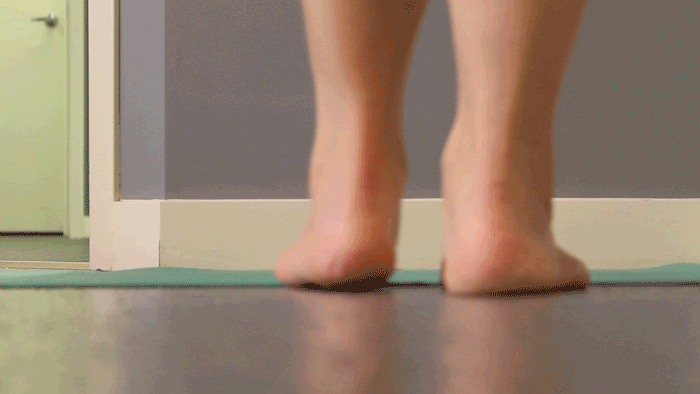
While holding your leg straight, prop your foot up keeping your toe against a wall, and then lean forward into the stretch.
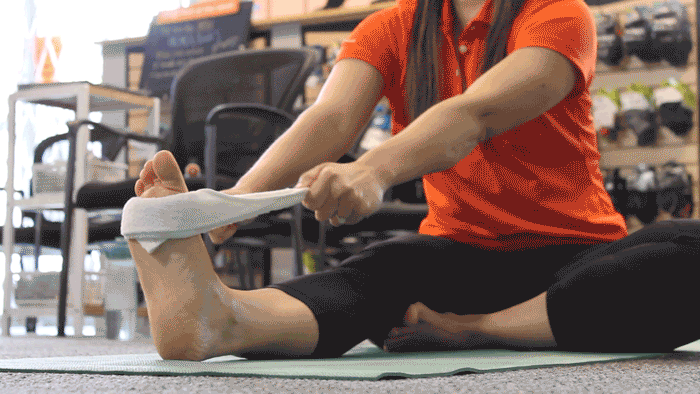
Sit down on the ground with one leg outstretched.
Now wrap a towel around the end of your foot and pull back towards you controlling the movement with both hands.
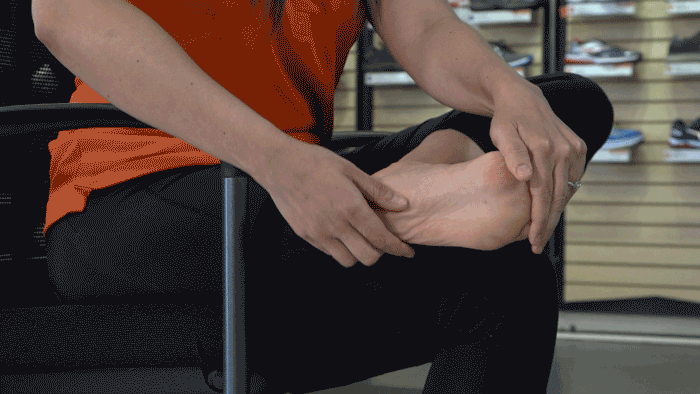
While sitting, rest your foot on your opposite knee and pull back on your toes, massaging the bottom of the foot with the other hand. This plantar fasciitis stretch can help ease pain.
2. Rehabilitate The Plantar Fascia
Perform these exercises two to three times a day.
In combination with plantar fasciitis stretches, increasing strength of the foot muscles can help stabilize the foot reducing symptoms and susceptibility to injury.
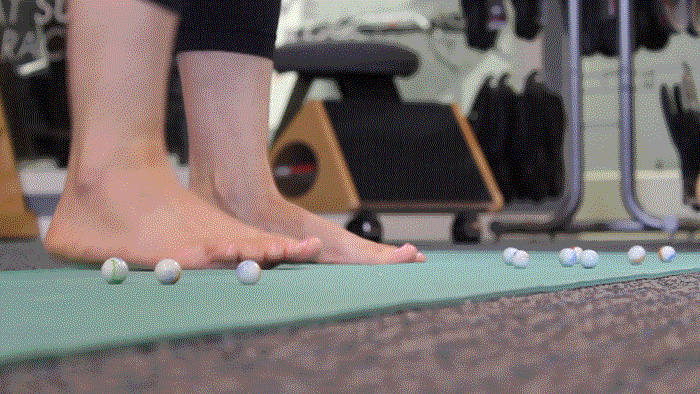
Using your toes, pick up a marble and move it to the side, then repeat.
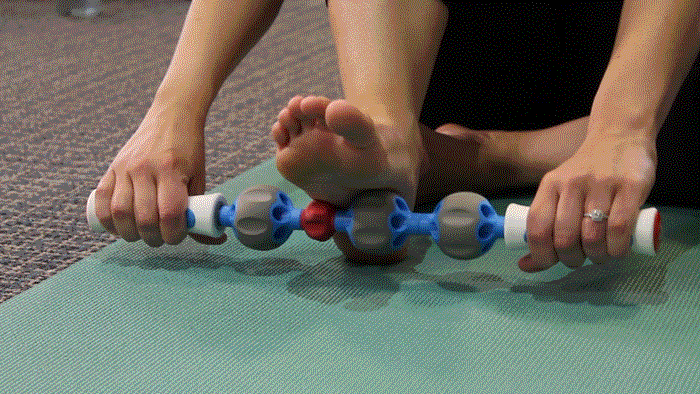
Use a massage stick or tennis ball to increase blood flow to the area, which speeds up healing.
3. Ice the foot
Applying ice to the heel and arch of the foot can help reduce inflammation and pain.
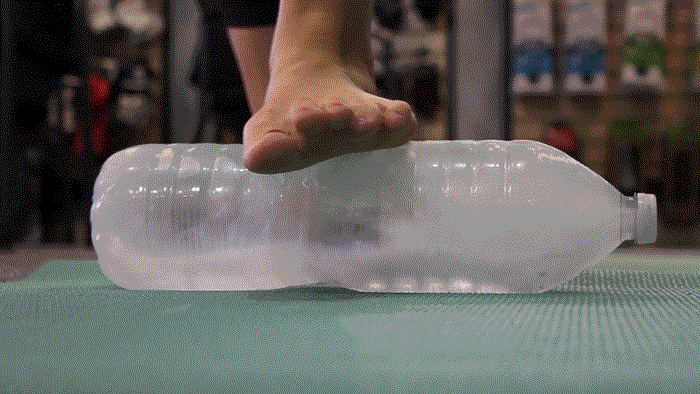
PRO TIP: Fill a water bottle about 90% with water and freeze it to use as a massage roller for the bottom of your foot. The frozen bottle doubles as a method of icing your foot to save time. Try it while watching TV or reading!
4. Support Your Feet At Home
While you’re practicing plantar fasciitis stretches at home, keeping your feet supported as well while at home is an often-overlooked way to treat plantar fasciitis.
Most people understand the importance of supportive shoes while working or playing sports but don’t consider the amount of time they spend barefoot around the house. The preference to hardwood floors over carpets in recent years has made this an even more important factor.
Wearing sandals or slippers with arch support and cushioning around the house to help reduce strain on the plantar fascia. Having a pair of indoor running shoes with custom orthotics or insoles added to them can also be a good option.
Your Plantar Fasciitis Tool Kit
Be strategic with these plantar fasciitis stretches and try to gradually build them into your daily routine. What works for some people doesn’t for others – so always use good judgment and seek help from a Fitting Expert at any Kintec Location if your condition doesn’t improve or symptoms worsen. Find plantar fasciitis products listed in this article on our shop website!
Colleen Kimberley
July 19, 2019 at 9:40 amThank you.
I’ve got pain on top of foot. Usually worse after rest. Subsides after walking a few minutes. Not sure how to treat it.
Michael Ryan - Director of R&D
October 13, 2021 at 12:36 pmHi Colleen – Pain on the dorsal or top of the foot could be related to irritate midfoot joints or possibly periodic restriction in blood flow. Best to see one of our pedorthists for a more detailed treatment plan: https://kintec.net/book/.
Paul Andrew Deuling
November 7, 2022 at 11:50 pmRight foot heel. Pains.
Sarah - Customer Service
November 9, 2022 at 9:16 amHello Paul,
There could be a few reasons why you have pain in the heel of your right foot. One of our fitting experts would be able to better narrow down the cause in a one2one appointment. You can book online https://www.kintec.net/book/ or by phone at 604-200-3338.